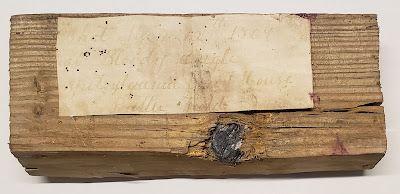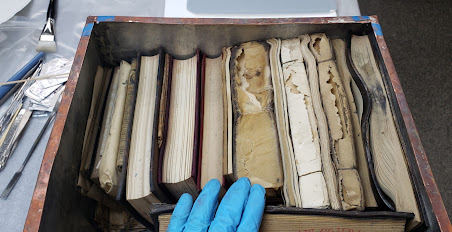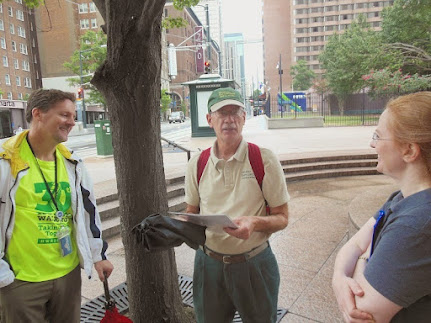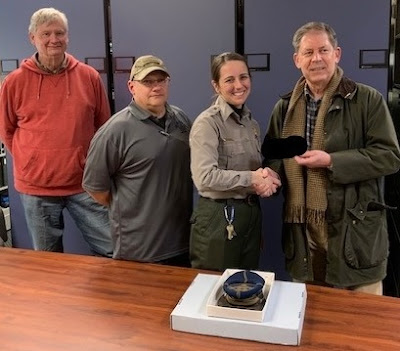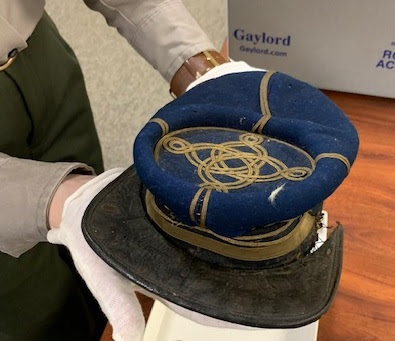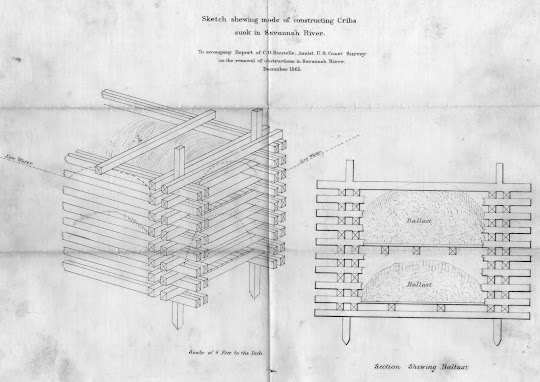 |
| Design of cribs placed in the Savannah River -- click to enlarge (National Archives) |
Confederate forces towed the wooden obstructions,
believed to be about 40 feet by 40 feet, and put them in place near Fort Jackson and
the ironclad CSS Georgia, a floating battery that was part of the Savannah
River defenses.
“They were severely degraded. They were not in great
shape,” U.S. Army Corps of Engineers Savannah District archaeologist Andrea Farmer
said of the condition of what are termed Crib C and Crib D. But a few portions, including the corner of one crib, had remained mostly intact.
Contract divers using sonar last fall located four of the cribs on the South Carolina side of the river. Cribs A and B were previously explored and the dives in November and December concentrated mostly on C and D, Farmer told the Picket earlier this month.
The Corps is in charge of the ongoing deepening of the
Savannah harbor and the dives are part of an investigation of historical resources
that have been or could be affected. The Corps recently concluded the recovery
of artifacts from the CSS Georgia, which was scuttled by its crew in December
1864 shortly before Federal forces took Savannah and was in the current shipping channel.
While tourists to the popular coastal destination gaze
upon the supertankers coming from or to the Atlantic Ocean, they likely have no
idea what lies beneath the surface: Remnants of vessels, pieces of Native
American pottery that washed down stream, and other items deposited over the
centuries.
 |
| View of cribs from multibeam survey. Dredged channel is in blue (USACE) |
The Confederacy used a wide
array of weapons and obstructions to deter advances on Savannah from the sea.
Besides forts and warships, wooden cribs, pile dams, torpedoes (mines), snags,
logs and shipwrecks were employed.
Unlike the cannons, the four cribs will be left in place.
They are not expected to be directly affected by future channel deepening
because they are on the northern edge of the project, Farmer said.
Corps officials referred to period maps and descriptions from Union Corps of Engineers Capt. William Ludlow and Capt. Charles Boutelle for information on the cribs. Boutelle, working for the U.S. Coast Survey, made a December 1865 survey of obstructions in the Savannah River.
 |
| Topographic view of four cribs from survey. Dredged channel is in blue (USACE) |
She said the cribs initially would have been at or near
the surface but years of deterioration have reduced them mostly to debris a few
feet about the river bottom.
“Crib
A may be the most well preserved, as it seems to have the greatest amount of
material based on the current height of the obstruction. Cribs C and D contain more material than Crib
B, both in terms of extant structure and rubble/brick fill based on the areas
that have been excavated.”
The Corps said it hopes to
provide photos of the dives soon.
 |
| Examination of harbor from the city to Elba Island (USACE) |

